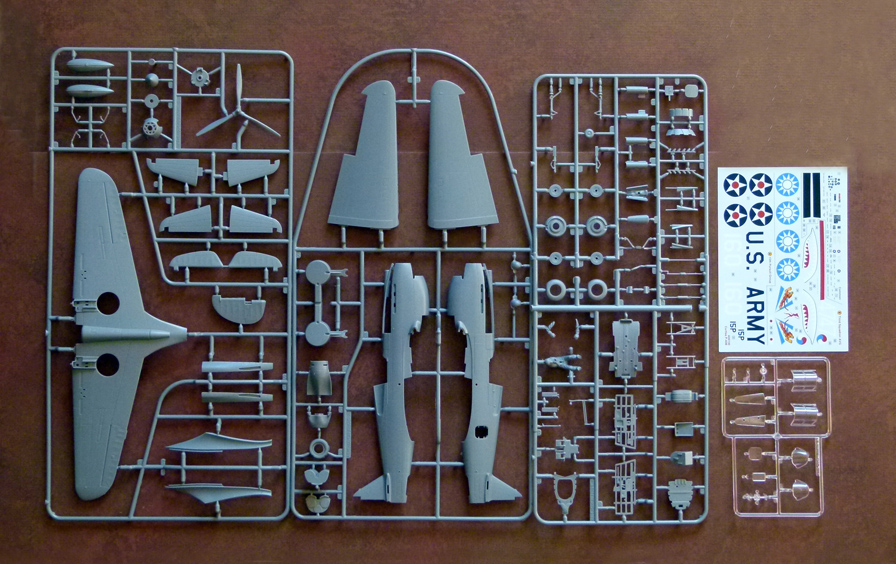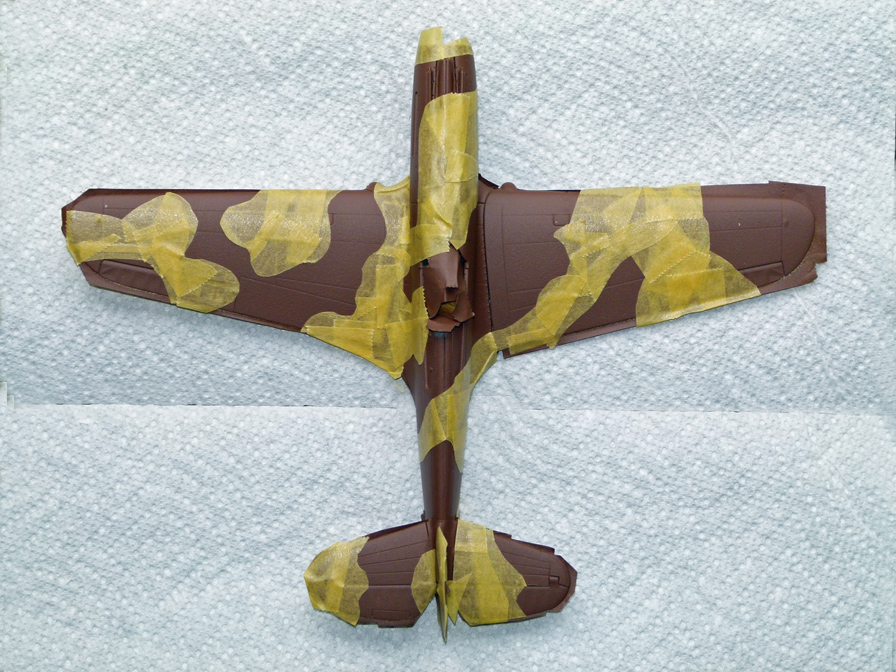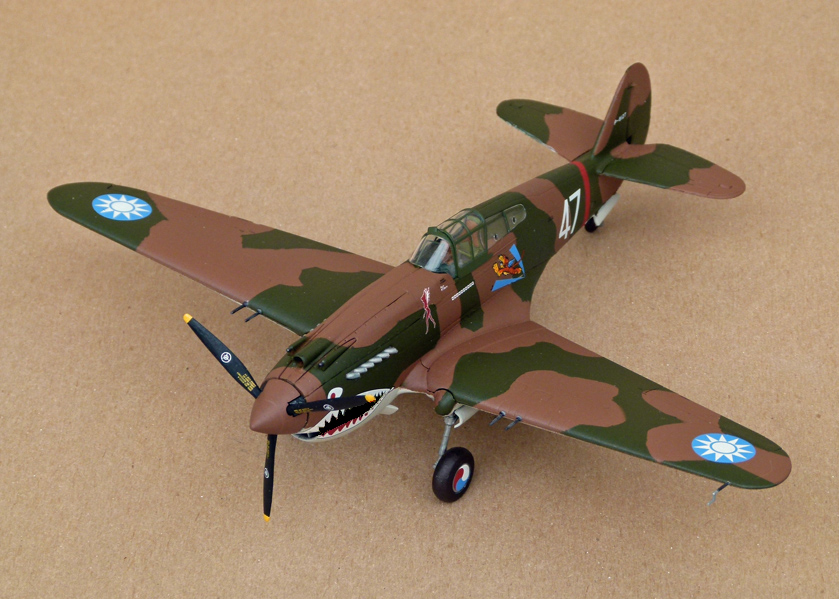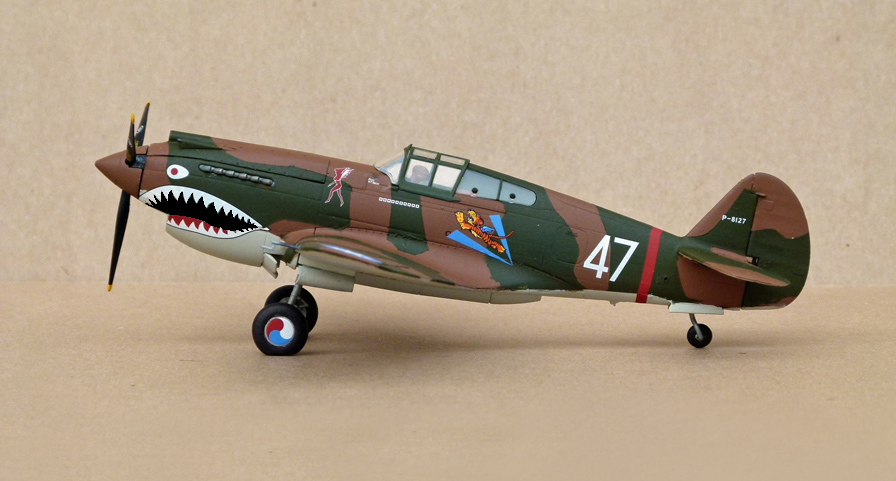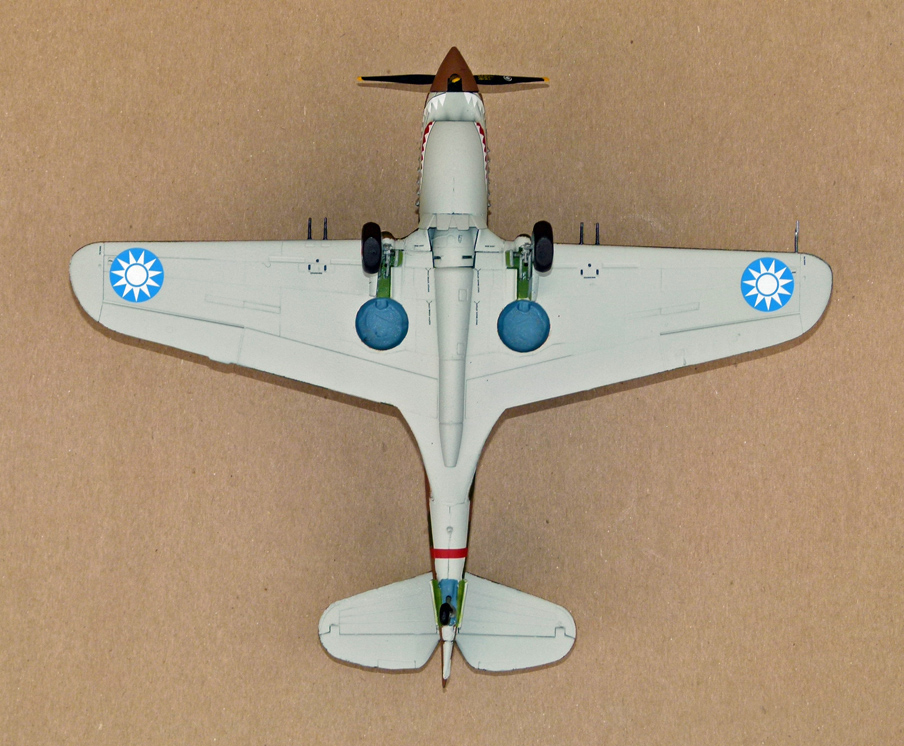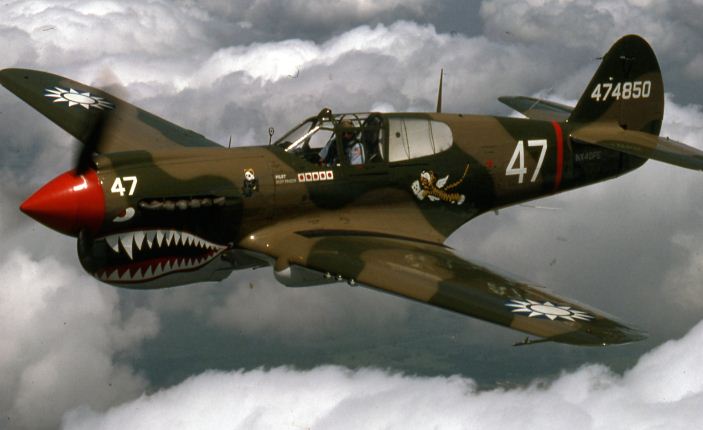

The P-40 fighter/bomber was the last of the famous "Hawk" line produced by Curtiss Aircraft in the 1930s and 1940s, and it shared certain design elements with its predecessors, the Hawk and Sparrowhawk. It was the third-most numerous US fighter of World War II. An early prototype version of the P-40 was the first American fighter capable of speeds greater than 300 mph. Design work on the aircraft began in 1937, but numerous experimental versions were tested and refined before the first production version of the P-40, the Model 81, appeared in May 1940. By September of that year, over 200 had been delivered to the Army Air Corps. 185 more were delivered to the United Kingdom in the fall of 1940, where they were designated the Tomahawk Mk I. Early combat operations pointed to the need for more armor and self-sealing fuel tanks, which were included in the P-40B (called the Tomahawk Mk IIA in the UK). These improvements came at price: a significant loss of performance due to the extra weight. Further armor additions and fuel tank improvements added even more weight in the P-40C (Tomahawk Mk IIB). Curtiss addressed the airplane's mounting performance problems with the introduction of the P-40D (Kittyhawk Mk I), which was powered by a more powerful version of the Allison V-1710 engine, and had two additional wing-mounted guns. The engine change resulted in a slightly different external appearance, which was the reason the RAF renamed it from the Tomahawk to the Kittyhawk. Later, two more guns were added in the P-40E (Kittyhawk Mk IA), and this version was used with great success (along with their mainstays, the earlier B-models) by General Claire Chenault's American Volunteer Group (The Flying Tigers) in China.
Some additional models, each with slight improvements in engine power and armament, were the P-40F (with a 1300 hp Rolls-Royce Merlin engine), the P-40G, P-40K (Kittyhawk Mk III), P-40L, P-40M and finally, the P-40N, of which 5200 were built (more than any other version.) While it was put to good use and was certainly numerous in most theaters of action in WWII, the P-40's performance was quickly eclipsed by the newer aircraft of the time. It was not considered one of the "great fighters" of the war but was one of the most famous due in part to its service with the Flying Tigers in China.
Flying Tigers
With the signing of the Lend-Lease Act, the Chinese Commissioner of Aviation, T.V. Soong, approached the U.S. to procure aircraft for China's air force. A number of P-40Bs were available, and were sold to a Chinese company. CAMCO, as it was called, shipped crated P-40Bs to Rangoon, Burma, where they were assembled. In a parallel move, CAMCO hired retired Navy and Army officers to travel to U.S. naval air stations and Army fields to recruit pilots, promising better pay than the U.S. military offered, along with getting into the war that America, at the time, resisted entering. In 1937, Claire Chennault, a retired U.S. Army captain, had been hired by the Nationalist Government to train Chinese pilots, then flying both Russian and Italian aircraft far inferior to the Japanese. Forming the American Volunteer Group (AVG), Chennault had new P-40 aircraft and a host of American recruits.
Though initially planned for three groups, the AVG actually fielded only one before America placed a freeze on the release of active duty personnel. Among the Naval Aviators who resigned their commissions to fly with the AVG were David Lee "Tex" Hill, Chuck Older, Dick Rossi, and Gregory Boyington, to name a few. In fact, the majority of the pilots in the AVG were Naval Aviators. "Tex" Hill became one of the top aces in the AVG, Older was a double ace with both the AVG and Army Air Forces 23rd Pursuit Group, and Boyington returned to the Marines to become a four-time ace and command the famous "Black Sheep" of Marine Fighting Squadron (VMF) 214. Another former Naval Aviator who served in the AVG, James H. Howard, eventually became an Army Air Forces pilot and received the Medal of Honor for actions over Europe in 1944. From 20 December 1941 to 4 July 1942, the AVG downed 299 enemy aircraft, and destroyed another 153 on the ground.
The Walt Disney Company designed the Flying Tigers insignia which featured a tiger with small wings emerging from a "V" for victory. Although the Flying Tigers made famous the shark mouth nose-art design, the RAF had been the first to popularize it during World War II. The RAF 112 fighter group was referred to as the “shark” squadron because its planes sported the shark mouth design. It is interesting to note that the RAF had taken the shark mouth design from the Germans who during World War II were the first to adopt the shark mouth design on their Bf 110s of II/ZG 76.
Facts and General Characteristics of the Model H81-A2 (export equivalent of the P-40B):
Contractor: Curtiss Aircraft
Type: Fighter/bomber
Crew: One
Wingspan: 37 ft. 4 in. (11.4 m)
Length: 31 ft. 8 in. (9.7 m)
Height: 12 ft. 4 in. (3.8 m)
Weight: Empty 5,590 lbs. (2,536 kg), Max Takeoff 7,600 lbs. (3,447 kg)
Power Plant: 1,040 hp Allison V-1710-33 inline piston engine
Max speed at 10,000 ft. (3,048 m): 350 mph (560 km/h)
Ceiling: 32,400 ft. (9,876 m)
Range: 730 miles (1,200 km)
Armament: Four 0.30-inch wing-mounted Browning machine guns synchronized to fire through the propeller arc and two 0.50-inch fuselage-mounted Browning machine guns.
Number Built (all variants): Approximately 15,000
Number Still Airworthy: 29
Facts and General Characteristics of the Model:
The model represents a Curtiss Hawk 81-A2 flown by Flight Leader Robert “R.T.” Smith, 3rd Pursuit Squadron, Kunming, China, June 1942. The pilots named this squadron “Hells Angels”, hence the red angel logo.
Manufacturer: Airfix, Hornby Hobbies Ltd. United Kingdom
Scale: 1/48
Wingspan: 9.3”
Length: 8”
Height: 2.3”
Parts: 106
Hours to build and paint: 23
